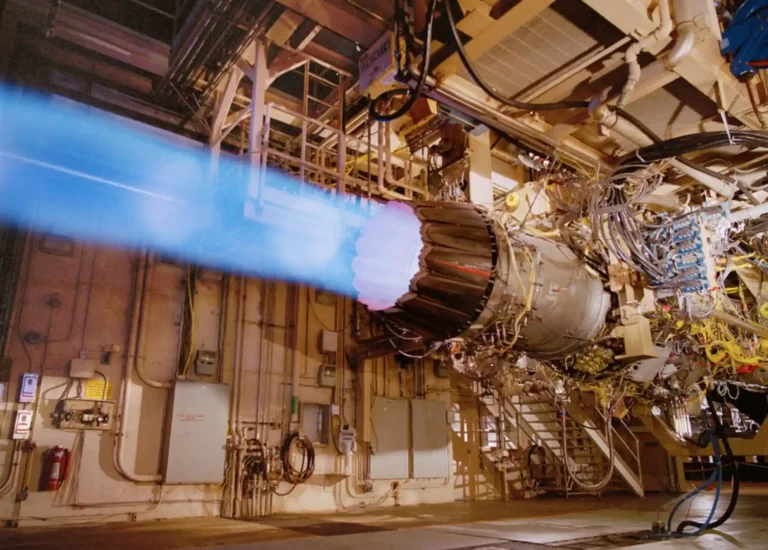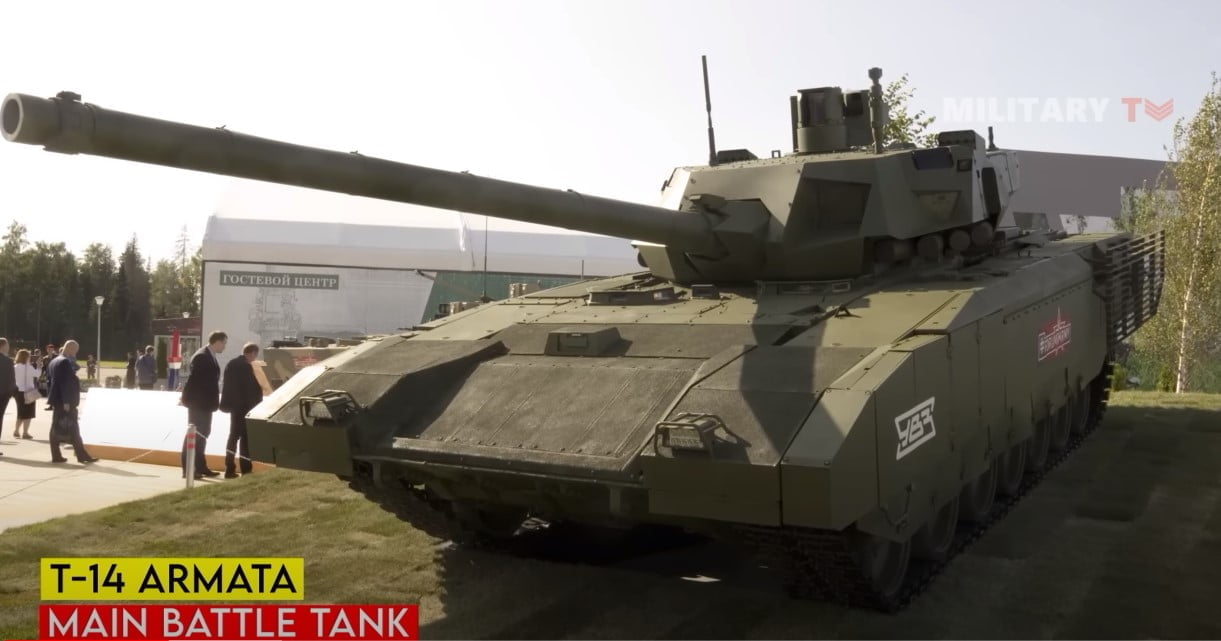Follow Us:

Share
Defense Feeds – As Ukraine gears up for its offensive against Russia, there has been an unexpected deployment of tank fleets from the Cold War era by Russia to the frontlines. These fleets comprise T-55 and T-62 tanks, which originated in the 1940s.
Despite Russia relying on older tanks, rumors have suggested that the newly introduced T-14 Armata battle tanks have also been employed. According to the RIA state news agency, it was reported that the T-14 Armata was involved in combat against Ukrainian defensive positions in an undisclosed location within the conflict zone.
However, until then, the tanks had not been directly engaged in assault operations. These speculations gained momentum from January to April 2023, although concrete visual evidence to support these claims still needed to be discovered.

As of July 2023, whether Armata tanks have started participating in direct combat is still being determined. There are several potential reasons for their non-involvement so far.
One possibility is that Russia, aware of the advanced technologies incorporated into its next-generation tank, aims to prevent it from falling into Ukrainian hands in close combat situations. There have been no open-source reports or documented instances of an Armata tank being destroyed, abandoned, or captured in Ukraine.
The introduction or potential engagement of the T-14 Armata raises crucial questions regarding the fleet’s size and the effectiveness of its technologies. The exact number of T-14 tanks operated by Russia remains unclear.
Even if these main battle tanks are deployed in combat, their quantity may need to be more significant to create a substantial impact. Various news reports suggest that the Kremlin initially ordered several thousand T-14 Armatas to be produced several years ago.
Still, the timeline for their arrival appears uncertain and may have been extended beyond 2025. Consequently, determining the exact size of Russia’s T-14 force proves challenging.
Regarding its performance, the T-14 Armata tanks are expected to bring about significant advancements in protective structures, technologies, and weaponry, which could significantly impact the tanks and vehicles utilized by Ukraine.
One notable difference between T-14 Armata and other Russian tanks like the T-72s, T-80s, and T-90s is that the other tanks have often fallen victim to “top-down” attacks, which have been heavily targeted and destroyed by Ukrainian forces. This is because the vulnerable top portion of these Russian tanks makes them susceptible to anti-armor weaponry such as Javelin, Carl Gustaf, or NLAWs anti-tank missiles.
In contrast, the T-14 Armata appears to differ in this aspect, as it is said to feature an unmanned turret. This design characteristic alone enhances the tank’s survivability by eliminating soldiers’ exposure in a vulnerable top position.

Moreover, the T-14 Armata tanks have extra protection around the sides and crew compartments. They feature layered armor, explosive reactive armor blocks, and sensor-activated defense systems.
The sensor-activated defense systems are designed to launch countermeasures against incoming missiles automatically. These tanks have also undergone combat training and coordination exercises at facilities in Ukraine.
Several reports, notably those from Russian media, have also underlined the T-14 Armata tank’s alleged superior technological capabilities. For example, a Russian media report claims the tank has outstanding thermal sights capable of identifying and destroying targets at distances of up to 3 miles.
If this range exceeds the capability of Ukrainian tanks, it could make them vulnerable to large-scale attacks by T-14 Armata tanks, which could engage and destroy them from safe distances.
In terms of weaponry, according to a report published a few years ago, the T-14 Armata tank is said to feature a new missile called the 3UBK21 Sprinter, which is currently in development. This missile purportedly has a range exceeding seven miles.
In comparison, the Armata’s existing round, the 9M119 Refleks, has a range of approximately 3.1 miles, similar to the current Abrams tank. The 9M119 Refleks round can penetrate armor up to 900 millimeters thick.
Additionally, another report highlights various noteworthy technical details about the Armata, such as its diesel engine with a horsepower ranging between 1,500 and 2,000. The maximum speed of the Armata tanks is reported to be approximately 50 mph.
Putin initially unveiled the T-14 to the public during Moscow’s 2015 Victory Day parade. This tank is widely regarded as superior to the T-90, which has been considered a competitor to the US Army’s M1 Abrams and has already been involved in the conflict in Ukraine.
The introduction of the T-14 coincides with observations from military analysts who describe Putin’s forces in Russia as struggling and transitioning to defensive strategies following unsuccessful offensive operations. A recent assessment from the Institute for the Study of War characterizes Russian troops in Ukraine as “disorganized” and “exhausted,” making it difficult for them to maintain critical frontline positions.
Therefore, the report suggests that significant reserves would likely be necessary to conduct any future offensive actions in the war effectively.
According to an intelligence update from the UK Ministry of Defense or MOD in January, there was a likelihood that Russia was considering deploying a limited number of its new T-14 Armata main battle tanks in Ukraine.
However, the MOD expressed skepticism about the possibility of the Armata tanks being actively engaged in combat. The ministry noted several factors that cast doubt on their operational involvement.
The T-14 Armata program, which has been under development for eleven years, has faced significant setbacks, including delays, a reduction in the planned fleet size, and reports of manufacturing issues, as highlighted by the MOD.
Share
Defense Feeds is publication focusing on informing, engaging, and empowering the world by providing accurate information from defense technology.
Powered by Defense Feeds © 2025 – All rights reserved.